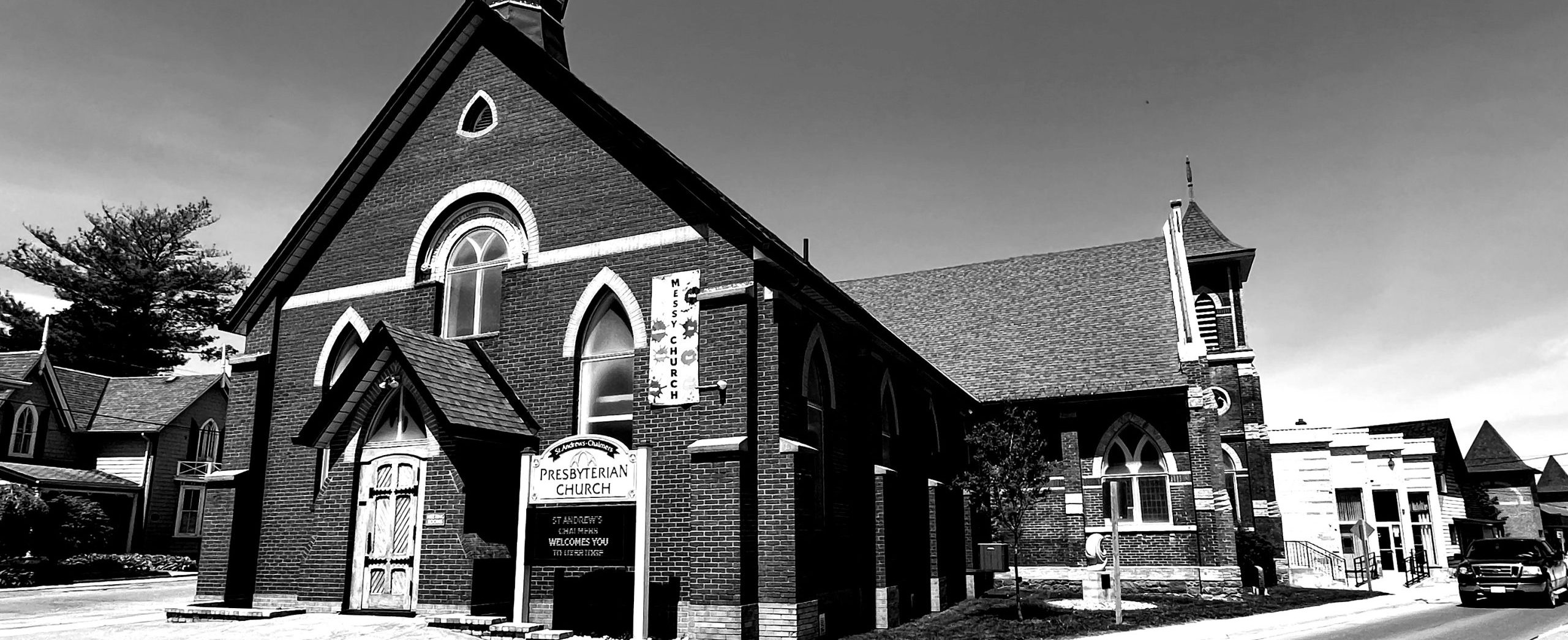St. Andrew’s – Chalmers Presbyterian Church
A History of Faith
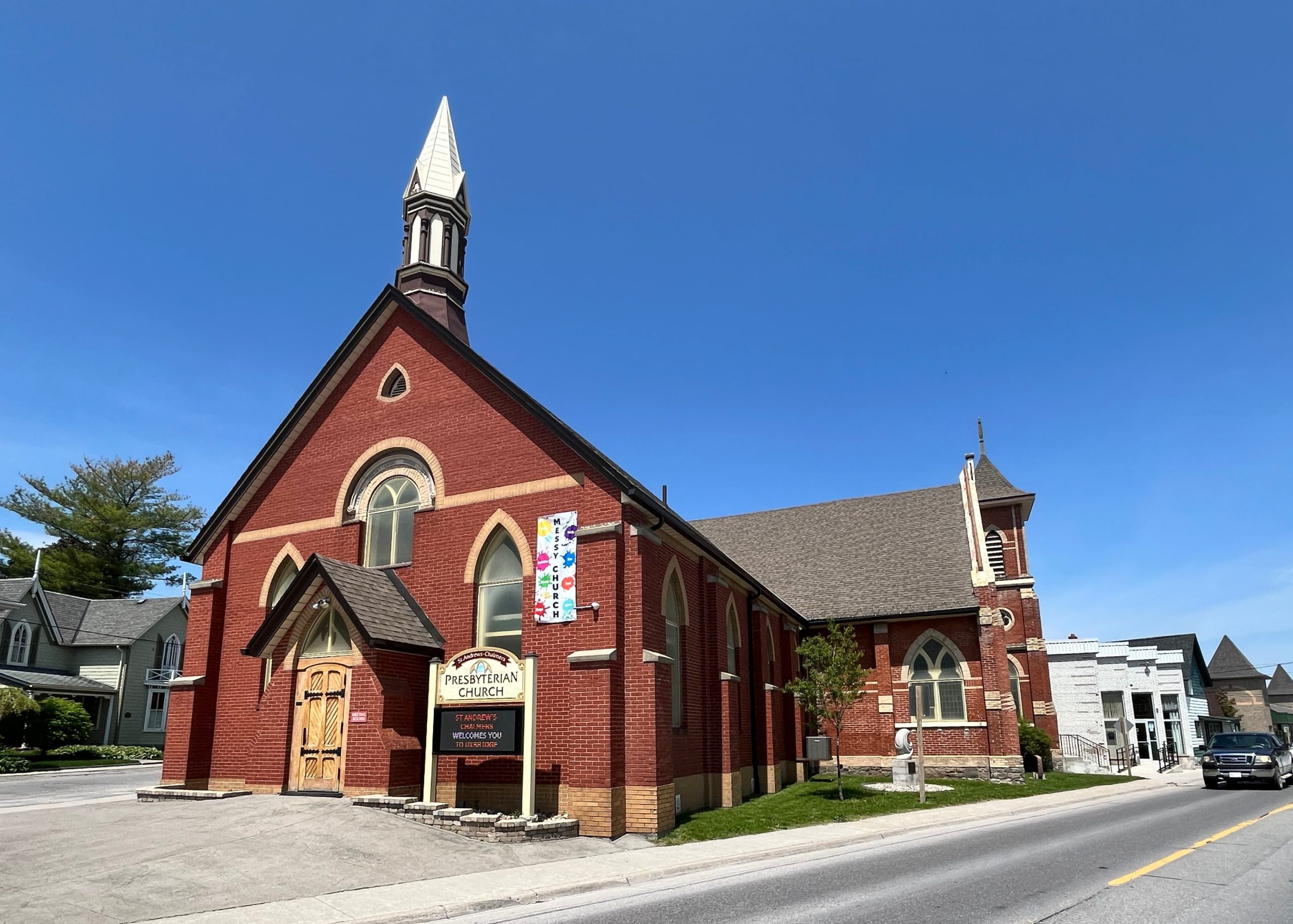
St. Andrew’s – Chalmers Presbyterian Church 2024
The Uxbridge St. Andrews – Chalmers Presbyterian Church boasts a rich history deeply intertwined with the community. Its roots stretch back to 1861 when it was established as the Presbyterian Church, Uxbridge. Initially, services were held at the Methodist Church on First Avenue.
In 1866, the congregation joined forces with the Leaskdale congregation, a significant step in its growth. This union paved the way for the construction of a new Gothic-style church in 1869, situated at the corner of Toronto Street and Church Street. This impressive structure, capable of seating 350 people, was a testament to the congregation’s dedication and cost approximately $3,000 to build.
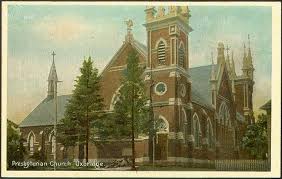
1910 Post Card – provided by the Toronto Public Library
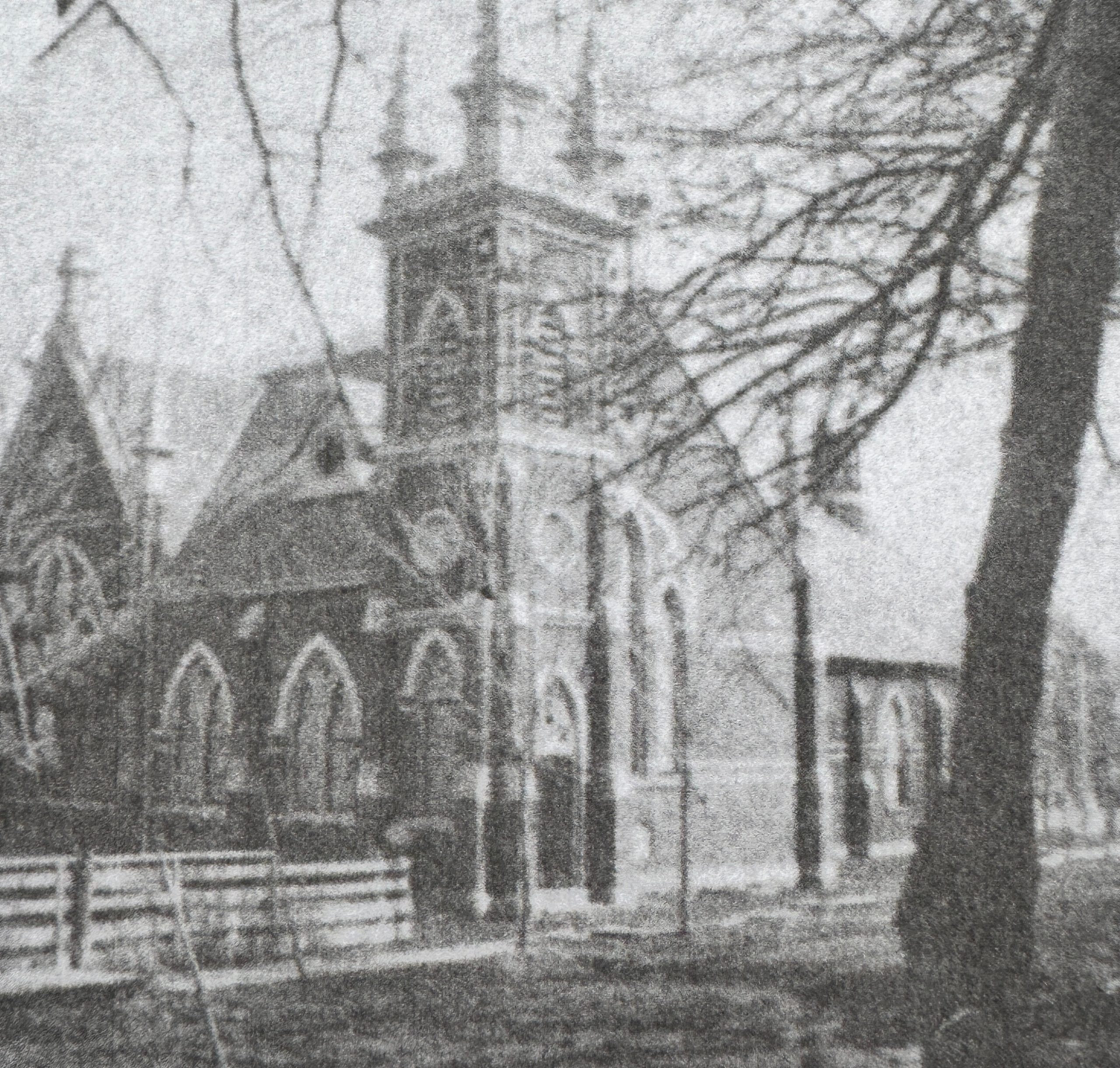
Photo Credit, Uxbridge The First 100 Years by: J. Peter Hvidsten
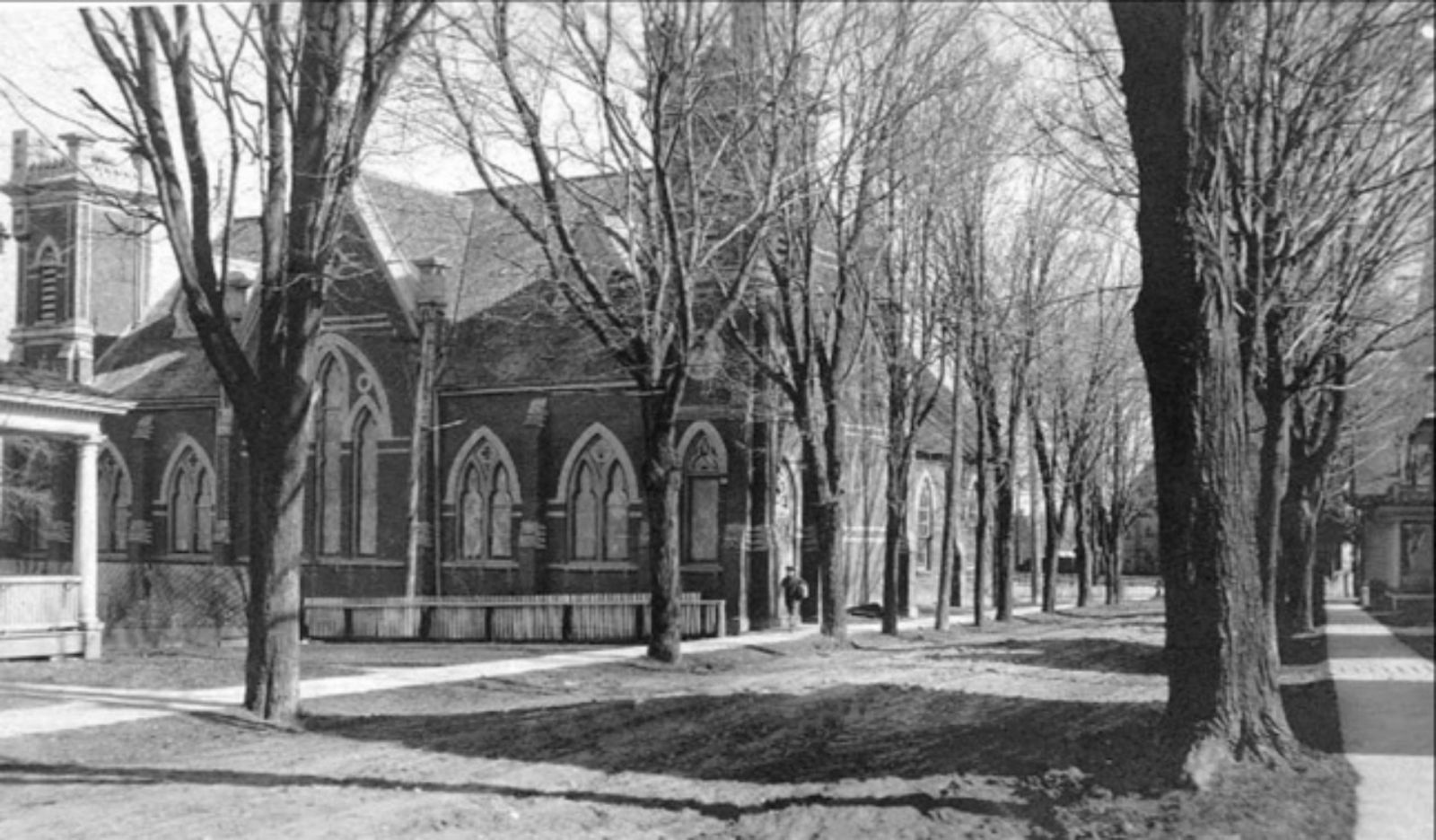
Church Street Uxbridge looking south towards Toronto Street. Photo courtesy of Uxbridge The First 100 Years by: J. Peter Hvidsten page 98
By 1883, the growing congregation recognized the need for expansion. Land behind the existing church was acquired, and construction commenced the following June. The result was a remarkable building featuring multiple large arched stained-glass windows and two imposing towers crowned with decorative spires. The entrance graced the base of the east tower, adding to the church’s grandeur.
The new church was officially opened on February 1, 1885, at a cost of around $11,000. Four years later, a pipe organ was installed, further enhancing the worship experience.
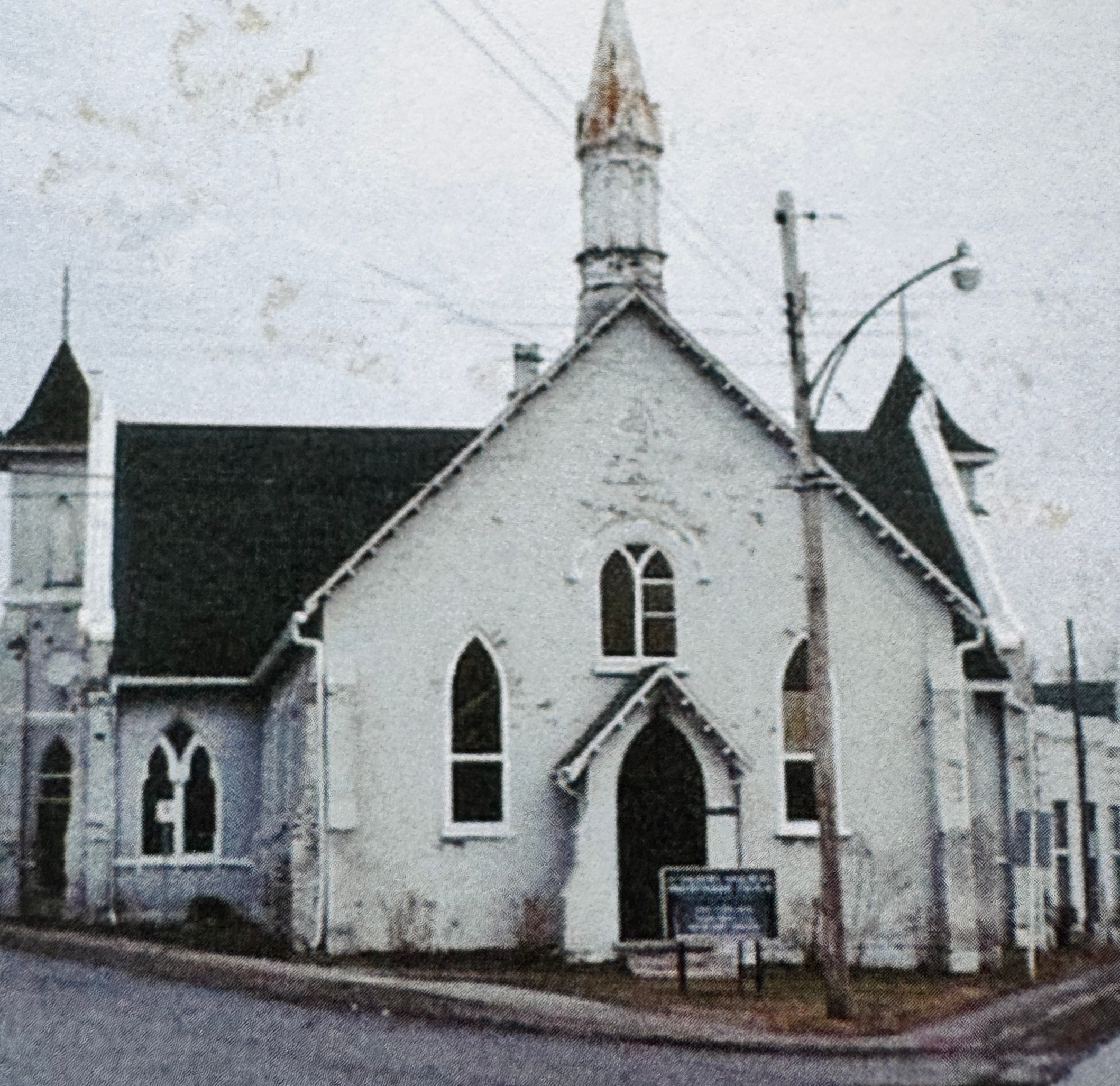
St. Andrew’s – Chalmers Presbyterian Church painted white. Photo courtesy of Uxbridge Landmarks Past and Present by: J . Peter Hvidsten
In 1921, the St. Andrews Quaker Hill congregation joined with St. Andrews, leading to a period of significant change. In 1925, a vote was held to remain with the Presbyterian Church, and the congregation adopted the name Chalmers Presbyterian Church.
A further milestone occurred in 1962 with the amalgamation of the two congregations. This event spurred the construction of a new hall, St. Andrew’s Hall. A sod-turning ceremony took place in 1963, followed by the laying of the cornerstone in June 1964. This period also saw the church building painted white to harmonize with the new hall. St. Andrew’s Hall was officially opened and dedicated on January 3, 1965.
By 1981, the church required extensive repairs. The congregation faced a crucial decision: build a new church or renovate the existing one. Ultimately, the decision was made to renovate. This involved removing many of the ornate features, sandblasting to remove the white paint, and installing new bricks to match the original red brickwork on the newer section of the building.
The Uxbridge St. Andrews – Chalmers Presbyterian Church stands as a testament to the enduring faith and community spirit of its members. Through its history of growth, change, and adaptation, it has remained an integral part of the Uxbridge community, providing a place of worship and fellowship for generations.
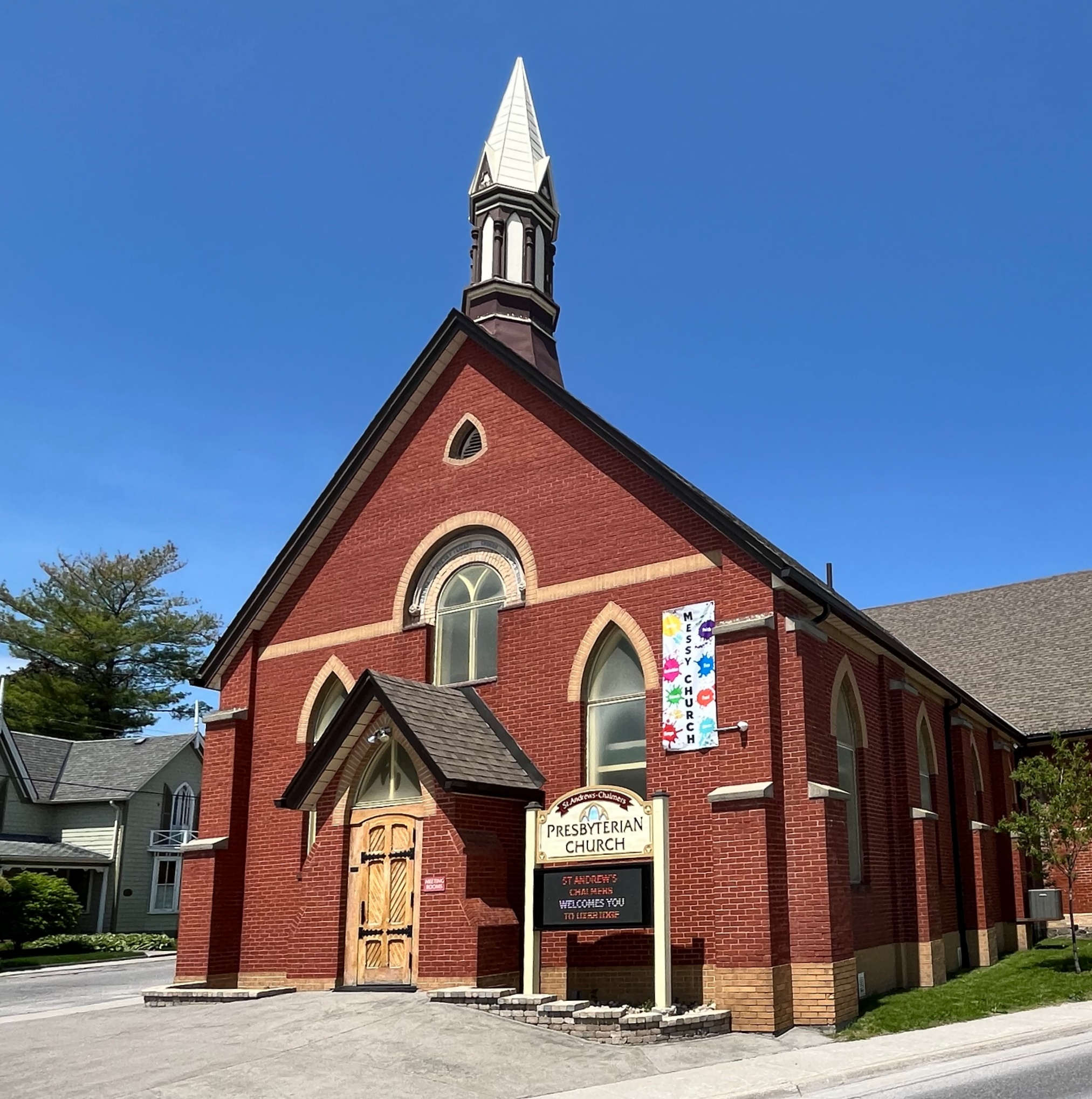
St. Andrew’s – Chalmers Presbyterian Church 2024
Read more about the history in Uxbridge by visiting our Uxbridge History Blog Page.
Sources and Credits;
Uxbridge The First 100 Years by: J. Peter Hvidsten
Uxbridge Landmarks Past and Present by: J . Peter Hvidsten


 Facebook
Facebook
 X
X
 Pinterest
Pinterest
 Copy Link
Copy Link
